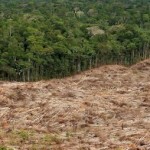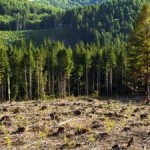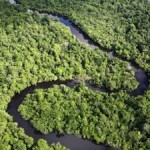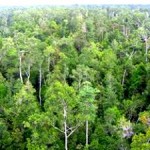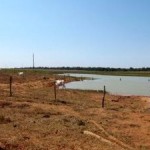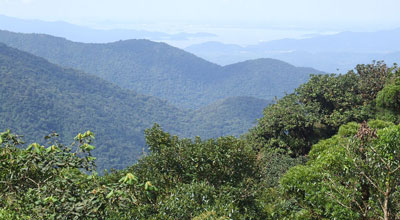
Scientists have found that tropical forests can absorb more carbon dioxide than what was originally thought of. The study, led by researchers at NASA and National Center for Atmospheric Research (NCAR), estimates that tropical forests absorb 1.4 billion metric tons of carbon dioxide out of a total global absorption of 2.5 billion.
But what are the differentiating characteristics of tropical forests responsible for high absorption of CO2?
“The CO2 effect is stronger, other things being equal, at higher temperatures. It is also proportional to overall plant growth, and tropical forests with long growing seasons and abundant water have high growth rates. Those characteristics, combined with their still remaining vast size, account for the effect most likely”, says David Schimel, of NASA’s Jet Propulsion Laboratory and lead author of the study, in response to our queries on email.
“Uptake by forests globally has increased significantly over the past decades, despite high rates of deforestation”, says Schimel. These findings indicate Nature’s response to rising temperatures, i.e., as the levels of carbon dioxide have risen, forests have responded by absorbing more CO2.
“Other studies have shown that the global terrestrial (mostly forest) rate of carbon uptake has been increasing over the past 150 years with apparent acceleration over the past 20-30 years. We argue that this is consistent with a strong response by the forests to increasing atmospheric CO2, and there really isn’t any other candidate theory to explain this increase.” says Britton Stephens, NCAR, co-author of the study. This can be seen as our beacon of hope as tropical forests can play a crucial role in containing adverse consequences of global warming.
Tropical forests are unique ecosystems that account for almost half of all species on Earth. But rampant deforestation of vast swathes of tropical forests in Amazon, Central Africa and South-East Asia poses a threat to this precious resource.
Globally, illegal land clearing for commercial agriculture has been found to be responsible for half of tropical deforestation. The commercial drivers for deforestation are different in different regions – in Latin America, it is soybean farming and cattle pastures; in Southeast Asia it is timber and palm oil plantations and in Africa it is charcoal production. Weak forest protection laws accounted for almost 90% of deforestation in Brazil’s Amazon between 2000 to 2012.
Deforestation has triple negative effects. First, the carbon that could have been absorbed by trees is left wandering in the atmosphere. Second, when the cleared areas are burnt using slash and burn techniques more carbon is released into the atmosphere. Third, forest fragmentation caused by deforestation leads to loss of biomass at the forest edges which results in more carbon dioxide emissions.
In a study by researchers at the University of Virginia, reported in December 2014, it has been found that destruction to tropical forests can drastically alter rainfall patterns which can impact not only the survival of remaining tropical forests but can also have impending consequences far outside the tropics. The study estimates that tropical deforestation can impact agricultural productivity in places as far as the US, France and China.
The new finding that tropical forests absorb more carbon dioxide than other forests and that too in an era of rising global carbon emissions points out the need to explore further the extent to which Nature can extend its support through such self-correcting mechanisms. Shrinking tropical forests may continue to be resilient but uncontrolled deforestation can nullify such benefits.
Tropical forests are more precious than we had originally thought and it is even more imperative now to protect them from deforestation. Only then the math would add up in our favor!
G V P Rajan is on the editorial board at ThinktoSustain.com and can be reached at rajan@thinktosustain.com. © 2015 ThinktoSustain.com. All Rights Reserved.




